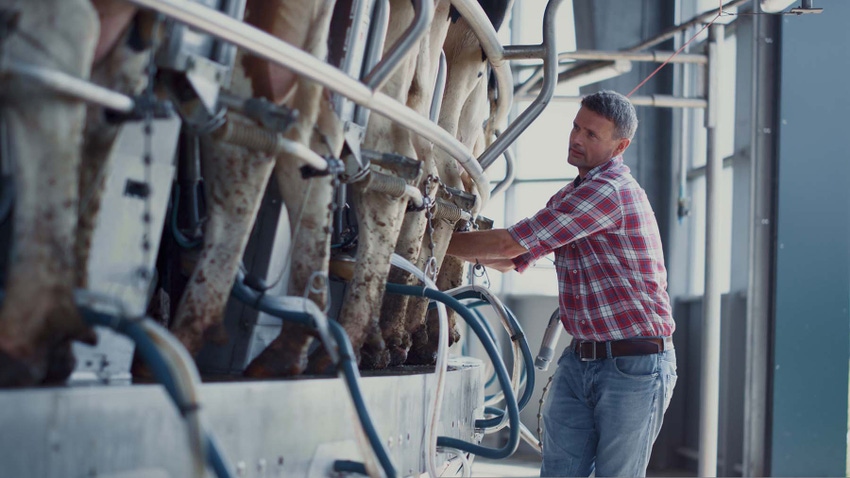
The Centers for Disease Control and Prevention reports a person in Texas tested positive for highly pathogenic avian influenza, commonly known as bird flu, after exposure to dairy cattle presumed to be infected with HPAI.
The National Veterinary Service Lab confirmed the H5N1 strain of Influenza A caused recent outbreaks of avian influenza in dairy cattle across at least five U.S. states. This is the same strain contracted by the patient in Texas.
The patient describes eye redness as their only symptom and is recovering. The individual is being treated with an antiviral drug for flu while they isolate.
This is the second person with a confirmed HPAI case in the U.S. A previous human case occurred in Colorado in 2022 when an inmate contracted the virus during a work assignment with poultry. Human infections with avian flu are uncommon but have occurred sporadically worldwide.
Texas issued a public health alert Monday asking health care providers in the state to be on the lookout for people with symptoms of avian influenza who may have been exposed to an infected person or animal.
Preventive measures
Despite this infection, the CDC still considers the risk to the U.S. general public to be low. However, people with close or prolonged exposures to infected animals or to environments contaminated by infected animals are at greater risk.
The CDC encourages people to avoid exposure to sick or dead animals including birds, animal carcasses, raw milk, feces, litter or any other materials contaminated by animals with a suspected HPAI infection.
Farmers and workers should wear recommended personal protective equipment such as an N95 filtering facepiece respirator, eye protection and gloves when coming into contact with any exposure risks. Anyone exposed to HPAI infected birds or other animals should monitor themselves for symptoms, including eye redness, for 10 days following exposure.
The CDC notes that preliminary analysis of the virus suggests FDA-approved flu antiviral medications should be successful in treating H5N1 in humans. Seasonal flu vaccines do not provide protection against these viruses.
USDA states there are no concerns with the safety of the commercial milk supply because products are pasteurized before entering the market. Pasteurization has continually proven to inactivate bacteria and viruses, like influenza, in milk. In addition, milk from impacted animals is being diverted or destroyed so that it does not enter the human food supply.
Dr. Justin Smith, Kansas State Animal Health commissioner, says the confirmation of Influenza A in dairy cattle, itself, is unique. “Our ruminant animals don’t tend to be affected by the influenza virus,” he says. “They’re one of our species that we frankly haven’t had a lot of historical reports of influenza affecting cattle worldwide, let alone in the United States.”
The main concern among dairy producers is “nose to nose” direct transmission of the virus between cattle. However, that does not appear to be the case. Smith says all the testing and reporting shows that the virus spreads through unpasteurized milk, likely via equipment in the parlor.
Recent HPAI timeline
Following is the timeline for the recent spread of HPAI:
Early March. Texas Animal Health Commission receives reports of a health event in Texas Panhandle dairy herds, including reduced feed intake, sudden milk production decreases and milk that is yellow with the appearance of colostrum. Initial cases were isolated to cows in their second lactation or greater, and more than 150 days in milk.
March 19. Kansas Department of Agriculture receives first reports of similar symptoms in Kansas dairies. Idaho and Delaware issue movement restrictions for cattle from Texas, Kansas and New Mexico dairies.
March 23. The diagnostic lab at Iowa State University reports a preliminary positive for Influenza A in two milk samples from two unrelated southwest Kansas dairies.
March 25. The National Veterinary Service Lab confirms the H5N1 strain of Influenza A in samples and starts genomic viral sequencing. The lab finds the Texas and Kansas sequencing is similar and consistent with wild bird introductions.
March 29. Dairies in Michigan and Idaho confirm HPAI-positive cows, with a virus strain similar to that from Texas and Kansas. Animal health officials think lactating heifers from Texas herds were moved to Michigan and Idaho herds with the virus incubating in them, but not showing clinical signs. Upon arrival, the virus spread through the milking equipment.
The USDA Animal and Plant Health Inspection Service is providing regular updates on detections in dairy herds. The CDC is working closely with state and federal agencies and local health authorities to further investigate and closely monitor this situation.
About the Author(s)
You May Also Like






